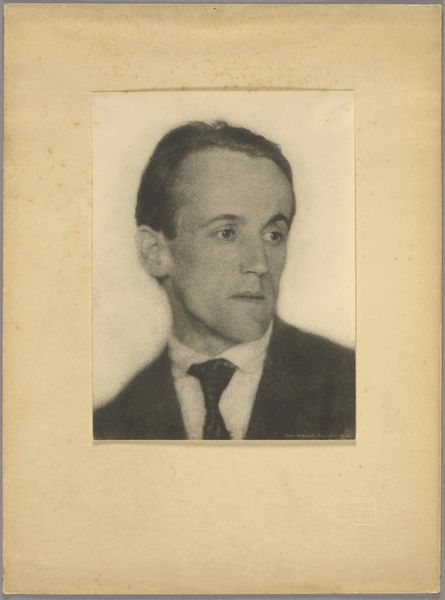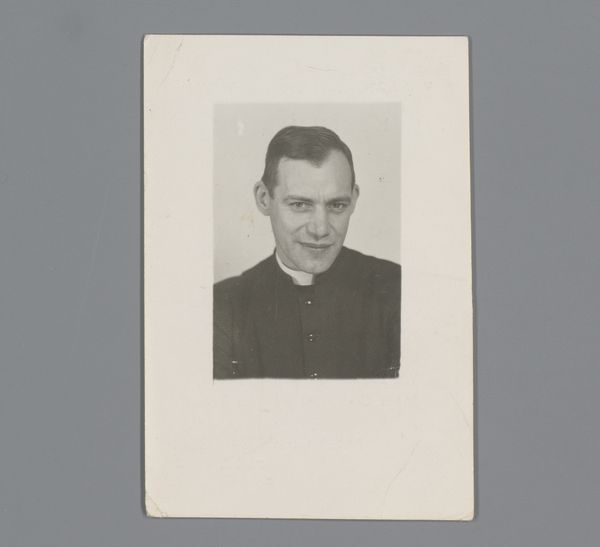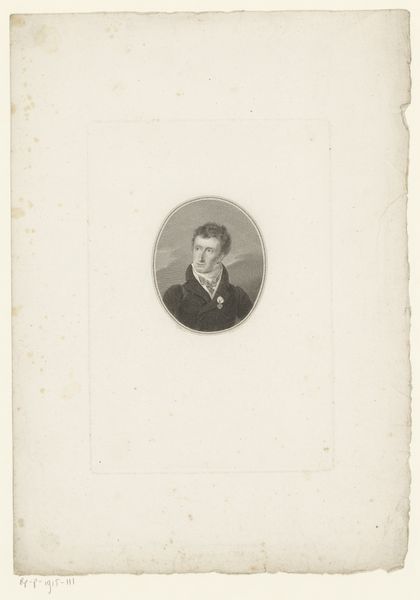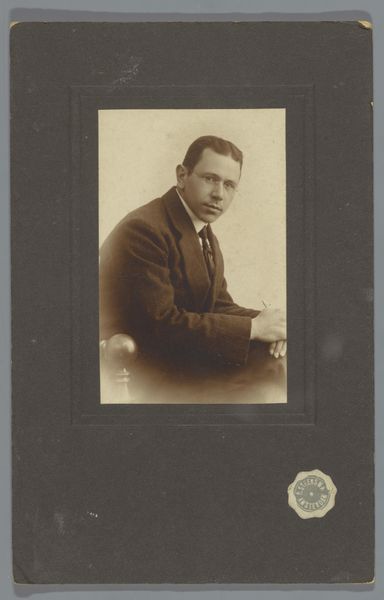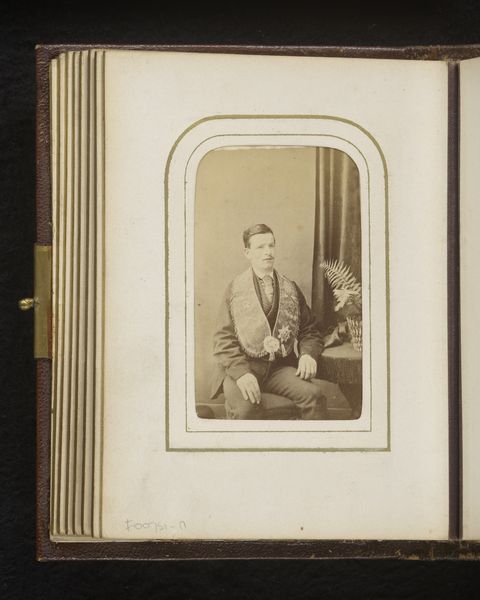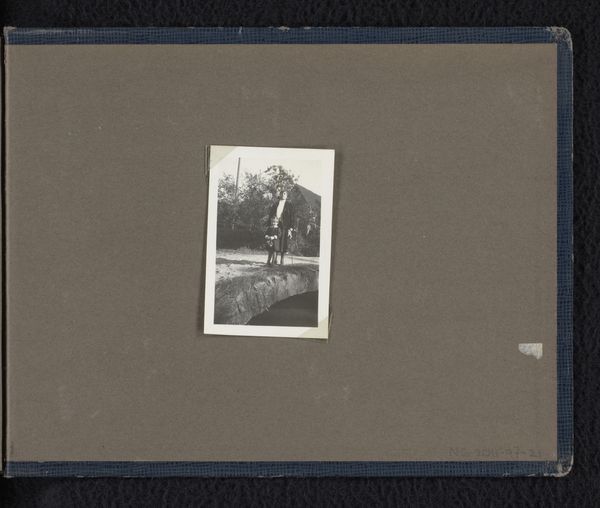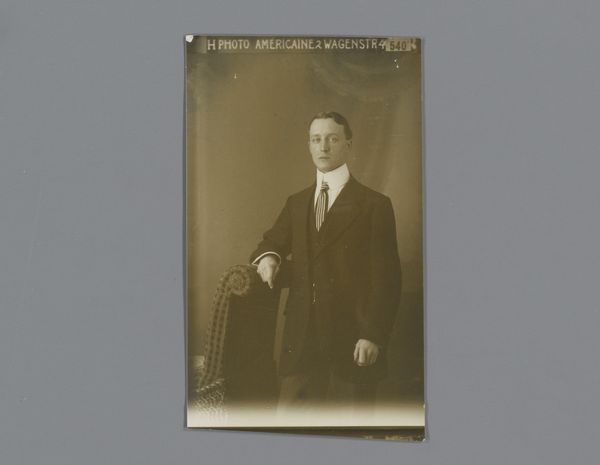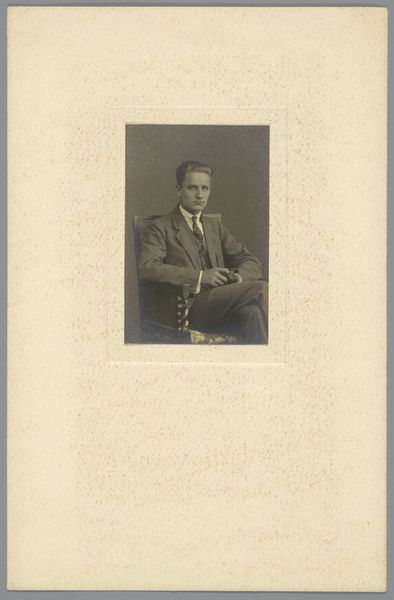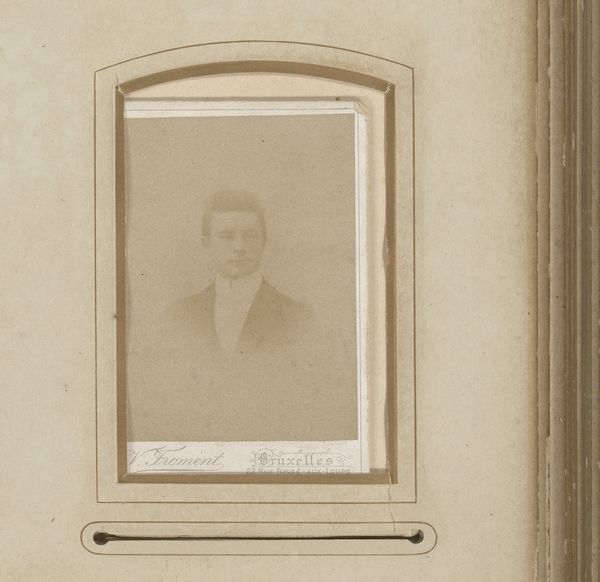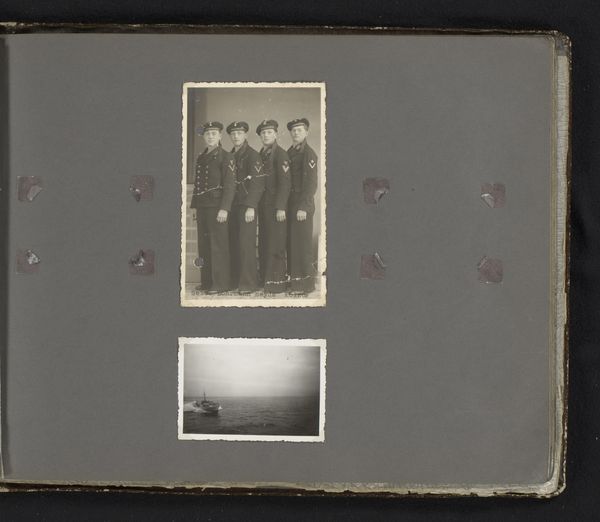
photography, gelatin-silver-print
#
portrait
#
photography
#
soldier
#
gelatin-silver-print
#
paper medium
#
realism
Dimensions: height 90 mm, width 69 mm, height 220 mm, width 280 mm
Copyright: Rijks Museum: Open Domain
Editor: This is "Portret van Martin O'Brienn," a gelatin silver print photograph likely taken between 1945 and 1948. The somber tones give it a rather formal, even melancholic, feeling. How do you read the cultural implications of a portrait like this, especially considering the presumed time period? Curator: That melancholy feeling, I think, speaks volumes. Consider the postwar context. We see a portrait of a soldier, likely taken shortly after World War II. These types of images were common: almost institutional in their need to recognize those who served. The uniformity in his dress—the buttoned shirt and tie—further reinforces this sense of required conformity. Editor: So it's less about individual expression and more about representing a group? Curator: Precisely. The “Foto Americaine,” presumably the photography studio, is really interesting here, as its very name highlights the American role during this period. Beyond individual representation, this image speaks to how photography functioned as a tool to solidify particular national identities, and in this case, also to potentially provide hope or a sign of safety. Editor: It’s a really stark image, so the cultural purpose almost overshadows the artistic intention. Do you think that was a typical dynamic at the time? Curator: I would say that is a really insightful way of thinking about the image. Especially thinking about the socio-economic landscape and the need to visually create heroes. Many photographic portraits functioned as both personal keepsakes and, simultaneously, propaganda for building particular narratives. What I also wonder, is the reason for such formal imagery because photography studios took a role akin to the official portraiture which traditionally was the realm of paintings, and thereby imbued similar standards. Editor: That's fascinating. It really changes my perspective. I was initially thinking of it in simple terms, but its context unlocks a much deeper understanding. Curator: Exactly! The beauty lies in deciphering the layers of meaning woven into the image's historical tapestry. Editor: Definitely gives me more to think about! Thanks!
Comments
No comments
Be the first to comment and join the conversation on the ultimate creative platform.
